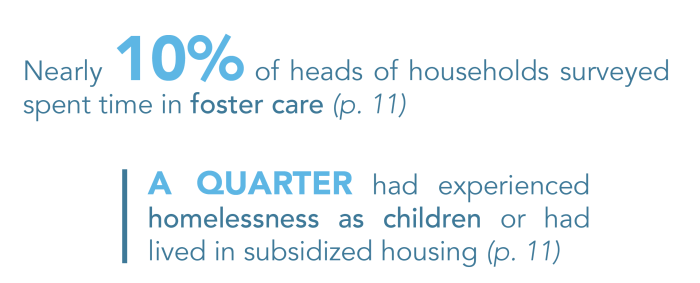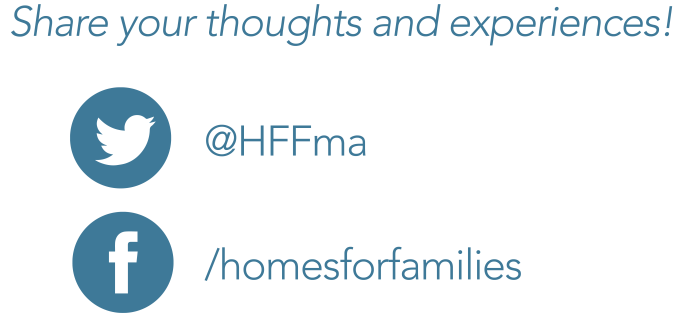Hunger and homelessness are interlinked and the experience of both can lead to higher risk of family separation, being held back at school, experiencing higher health risks such as asthma, and developmental delays. National Hunger and Homelessness Awareness Week is an annual program to bring attention to these important issues.
Across the Commonwealth over 90,000 children live in neighborhoods where over 30% of residents have incomes below the poverty line. This means a household of four is using their income of about $25,570 a year to pay for the cost of housing, utilities, food, childcare, transportation, and more. These basic necessities are often put in competition with one another, as housing prices continue to rise.
This year, Homes for Families will be participating in National Hunger and Homelessness Awareness Week during the week of November 16th to the 24th. We will be sharing important information on hunger and homelessness nationally and in the Commonwealth.
We are witness to the ways in which families experiencing housing instability and food scarcity meet these challenges with resourcefulness and resiliency, creating abundance in the face of scarcity. There are many examples of how family shelters, and community partners in Massachusetts do this with families as well. At our November Community Meeting we had a dialogue about just this and key themes emerged around the importance of autonomy, control and choice for families. Here are some of the examples of where scarcity in housing and food stability is met with abundance, followed by some opportunities to learn and improve when it comes to the family shelter setting.
Promoting Abundance in Community Done Well:
- Donations when aligned with what families want: E.G. Asking for size, need, and following up to ensure need is met
- Gift cards
-
- Gift cards for teens and tweens specifically – gives control and autonomy for families to choose
- Taking parent wishes, making it beautifully wrapped
- Case manager collecting from families what is wanted
- Asking families what food they want for the holidays and if they want to help prepare
Opportunities for Improvement/Lessons Learned:
- The way staff receives donations- make sure it is family-centric and empathetic
- Families to have increased involvement with which foods are available for greater cultural variety, for general variety in what is served- pantries to reach out to charities for support in meeting need for fresh foods, and a variety of foods.
- Understand the impact of staff having toys visible- families will ask about specific toys; the impact of when families know what other families have received
- Vetting sources of donations
- Working on effectively managing and getting gifts out: The process, being understaffed, having few vehicles. Where could vehicle/driving donations be made by services like Uber/Lyft?
- Giving throughout the year, and shelters using gifts as incentives.
Whether it’s through a communal meal, being surrounded by loved ones, or a warm welcome , when we find abundance through the support of community, so much more is possible.
-Team HFF




























